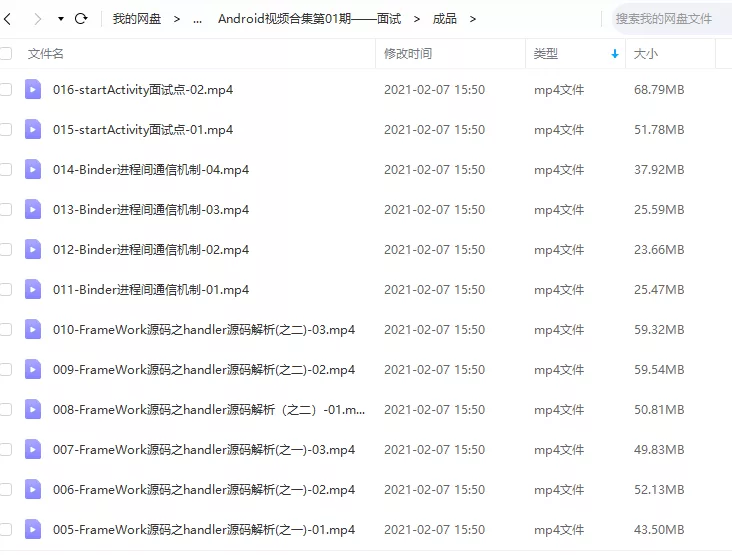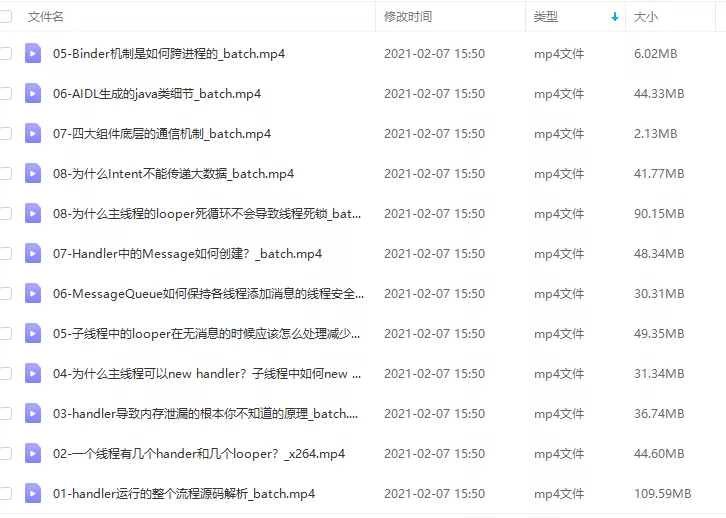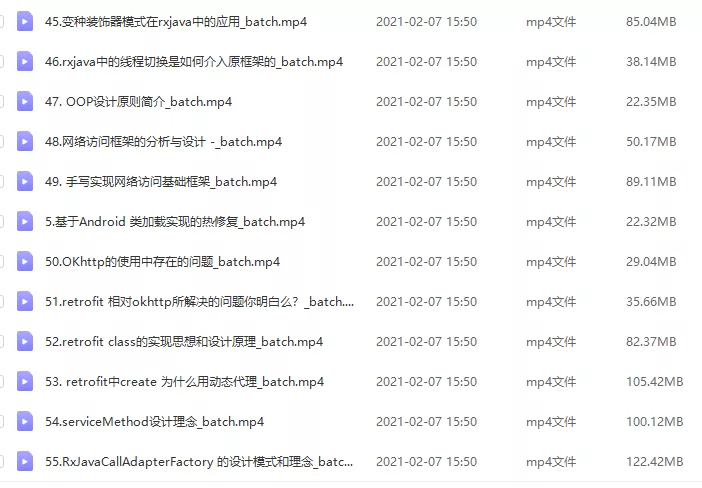foreword
In modern Android application development, it is becoming more and more important to build a maintainable, scalable and responsive architecture. In this article, we will introduce a novel architectural pattern: MVI (Model-View-Intent). We will explain the principle and process of the MVI architecture in detail, and conduct practical demonstrations through specific code examples. At the same time, we will also share some experience and problems solved in practical work. In addition, we will compare the advantages of the MVI architecture and how to compensate for its disadvantages, compared with the MVVM and MVP architectures.
1: The principle and process of MVI architecture
The MVI architecture is an architectural pattern based on responsive programming, which divides the application into four core components: model (Model), view (View), intent (Intent) and state (State).
Principle :
- Model (Model): Responsible for processing the state and logic of the data.
- View (View): Responsible for displaying data and user interface.
- Intent (Intent): represents the user's operation, such as button click, input, etc.
- State (State): Reflects the current state of the application.
Process :
- The user initiates an intent (Intent) through a view (View).
- Intent (Intent) is passed to the model (Model).
- The model (Model) updates the state (State) according to the intent (Intent).
- The change of the state (State) is passed to the view (View), and the view (View) updates the corresponding interface.
Advantages :
- One-way data flow: Through one-way data flow, the consistency and predictability of the state can be ensured.
- Responsive features: MVI uses the idea of responsive programming to achieve efficient processing of state changes.
- Ease of testing: Testing the behavior of the model becomes easier due to the clarity of the data flow.
Disadvantages :
- Steep learning curve: Compared with traditional MVC or MVP, the MVI architecture requires developers to be familiar with the concepts and tools of responsive programming.
- Added some complexity: The introduction of state management and data flow management may add some complexity.
Two: Practical explanation and code examples
In order to better understand the MVI architecture, let us demonstrate it through an example. We will create a weather forecast application that displays the current weather and forecast information for the next few days.
In the code examples, we will use the following libraries:
- RxJava: for processing reactive data streams.
- LiveData: Used to connect data streams to views.
First, we define the State (State) class of the model (Model), which contains relevant information about the weather forecast, such as temperature, humidity, and weather conditions.
data class WeatherState(
val temperature: Float,
val humidity: Float,
val condition: String
)
Next, we create the View interface to display weather information and provide a button to refresh the data.
class WeatherActivity : AppCompatActivity() {
// 初始化ViewModel
private val viewModel: WeatherViewModel by viewModels()
override fun onCreate(savedInstanceState: Bundle?) {
super.onCreate(savedInstanceState)
setContentView(R.layout.activity_weather)
// 监听状态变化,更新UI
viewModel.weatherState.observe(this, Observer {
state ->
// 更新温度、湿度和天气状况的显示
temperatureTextView.text = state.temperature.toString()
humidityTextView.text = state.humidity.toString()
conditionTextView.text = state.condition
})
// 刷新按钮点击事件
refreshButton.setOnClickListener {
// 发送刷新数据的意图
viewModel.processIntent(RefreshIntent)
}
}
}
Then, we create the intent (Intent) class, which represents the action of the user operation. In this example, we have only one intent to refresh the data.
object RefreshIntent : WeatherIntent
Next, we implement the Model part, including state management and data flow processing.
class WeatherViewModel : ViewModel() {
// 状态管理
private val _weatherState = MutableLiveData<WeatherState>()
val weatherState: LiveData<WeatherState> = _weatherState
// 处理意图
fun processIntent(intent: WeatherIntent) {
when (intent) {
RefreshIntent -> fetchWeatherData()
}
}
// 获取天气数据
private fun fetchWeatherData() {
// 发起网络请求或其他数据获取逻辑
// 更新状态
val weatherData = // 获取的天气数据
val newState = WeatherState(
temperature = weatherData.temperature,
humidity = weatherData.humidity,
condition = weatherData.condition
)
_weatherState.value = newState
}
}
Three: Precautions
- Carefully design the state model: Reasonably divide the state and avoid excessive refinement or chaotic state management. This is actually a difficult point for architecture design, and it must be balanced.
- Reasonable use of libraries and tools: Choose a suitable reactive programming library, such as RxJava or Kotlin Flow, and a suitable state management tool, such as LiveData or StateFlow.
Four: Comparison of MVI, MVVM and MVP architectures
MVI, MVVM, and MVP are all common Android architecture patterns, each with its own advantages and applicable scenarios.
MVI -VS- MVVM:
- The data flow of MVI is one-way, and the state change is driven by the model (Model), which ensures the consistency and predictability of the state.
- Two-way data binding in MVVM can simplify the data interaction between the View (View) and the Model (Model), but it may also lead to confusion in state management.
MVI -VS- MVP:
- MVI achieves efficient processing of state changes through responsive data flow. In contrast, the interaction between View (View) and Model (Model) in MVP is relatively complicated.
- The one-way data flow of MVI makes it easier to test the behavior of the Model (Model), while the coupling between the View (View) and the Model (Model) in MVP may make testing difficult.
Summarize
The MVI architecture provides a maintainable, testable and responsive architecture pattern through the characteristics of responsive data flow and unidirectional data flow. Although the learning curve is steep, in the development of large and complex applications, the MVI architecture can better manage the state and respond to user actions. By rationally designing the state model and paying attention to side effect management, we can give full play to the advantages of the MVI architecture and improve the maintainability and user experience of the application.
Questions to think about :
- What state management challenges have you encountered when developing applications using the MVI architecture? How to solve these challenges?
- How does reactive data flow in MVI architecture affect application performance? How to optimize performance?
Answers to questions :
- In MVI architectures, a common challenge is how to effectively manage and organize state. In order to solve this problem, state sharding can be used to divide the state into smaller granularities for better management and tracking of state changes.
- Responsive data flow can provide efficient state change processing in the MVI architecture, but if it is not restricted and optimized, it may cause too many state updates and interface refreshes, affecting performance. In order to optimize performance, you can use operators such as debounce to limit the frequency of state changes, and only update the interface when necessary. At the same time, you can also use caching strategies and asynchronous operations to reduce unnecessary calculations and network requests.
at last
If you want to become an architect or want to break through the 20-30K salary range, then don't be limited to coding and business, but you must be able to select models, expand, and improve programming thinking. In addition, a good career plan is also very important, and the habit of learning is very important, but the most important thing is to be able to persevere. Any plan that cannot be implemented consistently is empty talk.
If you have no direction, here I would like to share with you a set of "Advanced Notes on the Eight Major Modules of Android" written by the senior architect of Ali, to help you organize the messy, scattered and fragmented knowledge systematically, so that you can systematically and efficiently Master the various knowledge points of Android development.

Compared with the fragmented content we usually read, the knowledge points of this note are more systematic, easier to understand and remember, and are arranged strictly according to the knowledge system.
Full set of video materials:
1. Interview collection

2. Source code analysis collection

3. The collection of open source frameworks

welcomes everyone to support with one click and three links. If you need the information in the article, directly scan the CSDN official certification WeChat card at the end of the article to get it for free↓↓↓
PS: There is also a ChatGPT robot in the group, which can answer your work or technical questions
